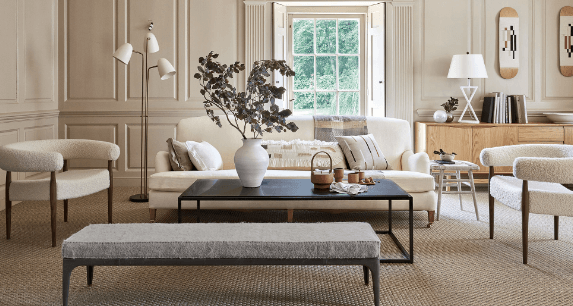Expert Tips for Decorating with Patterns and Textures

Decorating with patterns and textures is an excellent way to add depth, interest, and personality to your home. Whether you’re a seasoned decorator or a newbie, these expert tips will help you master the art of blending patterns and textures in your space.
1. Start with a Neutral Base
A neutral base provides a clean slate that allows your patterns and textures to stand out without overwhelming the space. Think beige, gray, or white walls and furniture. This foundation makes it easier to layer in more complex designs.
2. Mix and Match Patterns
Don’t be afraid to mix different patterns, but aim for a cohesive look. Start with one dominant pattern and complement it with smaller, less complex ones. For instance, a large floral print on a sofa can be paired with striped or geometric throw pillows. The key is to balance bold designs with more subtle ones.
3. Play with Scale
Varying the scale of patterns can create visual interest. Combine large, medium, and small-scale patterns to keep the eye moving around the room. For example, a large area rug with a bold print can be paired with smaller patterned cushions and a medium-sized patterned throw.
4. Incorporate Textures
Textures add a tactile dimension that patterns alone cannot achieve. Mix different materials like velvet, linen, and wool to add depth and warmth. A velvet couch, a knitted throw, and a jute rug can create a rich, inviting atmosphere.
5. Stick to a Color Palette
Using a consistent color palette helps tie different patterns and textures together. Choose a few main colors and ensure that the patterns and textures you select incorporate these hues. This approach maintains harmony and prevents the decor from looking chaotic.
6. Balance Bold and Subtle Elements
If you’re using a bold pattern or texture, balance it with more subdued elements. For example, a statement wallpaper with a strong pattern can be balanced with solid-colored furniture and accessories. This technique prevents the space from feeling too busy.
7. Experiment with Accents
If you’re new to using patterns and textures, start small with accents. Incorporate patterned cushions, textured throws, or patterned curtains. These elements can easily be swapped out if you decide to change the look.
8. Trust Your Instincts
Ultimately, decorating is a personal expression of style. Trust your instincts and choose patterns and textures that resonate with you. Don’t be afraid to break the rules and create a space that feels uniquely yours.
By thoughtfully combining patterns and textures, you can create a dynamic and visually appealing space that reflects your personality and style. Happy decorating!
Decorating with patterns and textures is an excellent way to add depth, interest, and personality to your home. Whether you’re a seasoned decorator or a newbie, these expert tips will help you master the art of blending patterns and textures in your space.
1. Start with a Neutral Base
A neutral base provides a clean slate that allows your patterns and textures to stand out without overwhelming the space. Think beige, gray, or white walls and furniture. This foundation makes it easier to layer in more complex designs.
2. Mix and Match Patterns
Don’t be afraid to mix different patterns, but aim for a cohesive look. Start with one dominant pattern and complement it with smaller, less complex ones. For instance, a large floral print on a sofa can be paired with striped or geometric throw pillows. The key is to balance bold designs with more subtle ones.
3. Play with Scale
Varying the scale of patterns can create visual interest. Combine large, medium, and small-scale patterns to keep the eye moving around the room. For example, a large rug with a bold print can be paired with smaller patterned cushions and a medium-sized patterned throw.
4. Incorporate Textures
Textures add a tactile dimension that patterns alone cannot achieve. Mix different materials like velvet, linen, and wool to add depth and warmth. A velvet couch, a knitted throw, and a jute rug can create a rich, inviting atmosphere.
5. Stick to a Color Palette
Using a consistent color palette helps tie different patterns and textures together. Choose a few main colors and ensure that the patterns and textures you select incorporate these hues. This approach maintains harmony and prevents the decor from looking chaotic.
6. Balance Bold and Subtle Elements
If you’re using a bold pattern or texture, balance it with more subdued elements. For example, a statement wallpaper with a strong pattern can be balanced with solid-colored furniture and accessories. This technique prevents the space from feeling too busy.
7. Experiment with Accents
If you’re new to using patterns and textures, start small with accents. Incorporate patterned cushions, textured throws, or patterned curtains. These elements can easily be swapped out if you decide to change the look.
8. Trust Your Instincts
Ultimately, decorating is a personal expression of style. Trust your instincts and choose patterns and textures that resonate with you. Don’t be afraid to break the rules and create a space that feels uniquely yours.
By thoughtfully combining patterns and textures, you can create a dynamic and visually appealing space that reflects your personality and style. Happy decorating!
